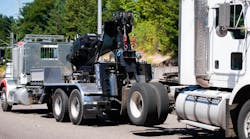There is no driver shortage when the economy is in a recession. That common wisdom does not distinguish among carrier types and regions. I am one of those who still see driver turnover as a problem and one that will only grow.
For most carriers, the main concern now is getting what freight there is moved, hopefully cost-effectively. However, now may be a good time to plan how to retain and attract new drivers once the recovery is put in place.
Studies that I participated in over 30 years ago point to some interesting differences with the structure of today's driver pool and their aspirations. The most recent study I had a chance to review was one conducted by Ramp Media Group in association with The Trincon Group.
If I remove the obvious changes that happened over the past 30 years with respect to equipment, freight handling and traffic conditions, the underlying driver sourcing and attitudes show some interesting changes.
If you're a fleet that has been in business during this period of time, look at your driver roster for each decade — 1980s, 1990s, and the past eight years. I am certain you'll agree with the following three very telling changes that have occurred during each of those decades.
First, what are the drivers doing prior to entering this profession? In earlier periods, we saw a greater portion from the agricultural sector, from the military, and from local driver applications; some even came from the shop and freight docks. Currently, we see them coming from other professions such as manufacturing and white-collar employment. In addition, there are more female drivers now than in the past. Education levels show over 45% (in the survey of 500 drivers mentioned above) with more than a high school education.
We are now getting around to increasing the sourcing from the military after decades of not focusing on that very important sector. The agricultural sector, however, yields a declining share of the drivers due in part to the shrinking number of family-owned farms and increased opportunities for alternative employment cropping up in the Farm Belt.
A second change is the family connection as a source for drivers. I have yet to find a motor carrier that has the same, or even higher, number of drivers who had family members driving in the 1970s or 1980s. Driving is no longer a recommended job within the household or extended family. This is a major blow to the industry since the pay and benefits exceed the national average and one would think it should be a natural progression. The reason why appears to be the attitudes of the drivers themselves.
A third important change is the intention of the current drivers to continue driving and to remain with their current employer. After deregulation, driver pay took a major hit and grew less than that for construction and manufacturing for many years. The study showed that more than one in five drivers would quit immediately if they found a better job. At the same time, about one-third of the respondents indicated they would remain truck drivers until they retired. Another one in five indicated they would find a job within trucking other than driving. There appears to be some evidence of an underlying fondness for the trucking industry — but one that has to be nurtured. As with most professions, the drivers clearly point out that they lack clear communication from senior management.
The study I refer to in this article was conducted through voluntary driver participation. It is not intended as a scientific sample, but does offer some interesting insights.


